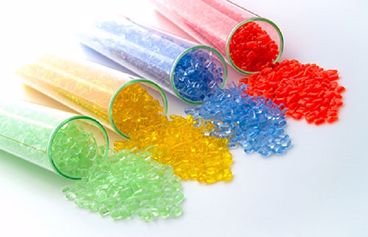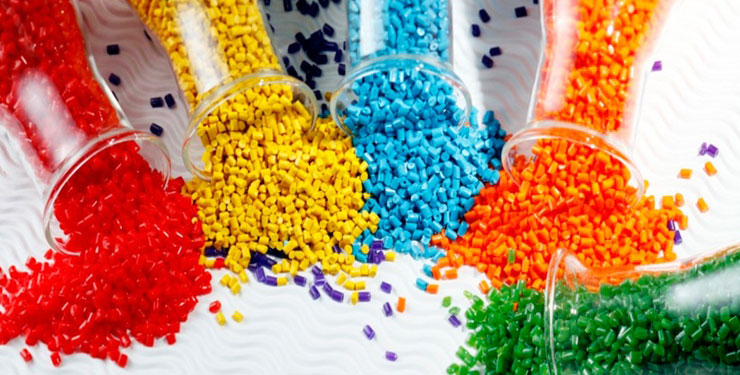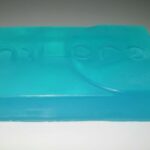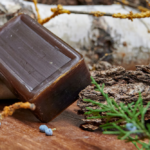Plastic is the common name for many artificial materials that can be easily shaped by molding, rolling, or any other technique. The word plastic comes from the Greek word plasticos, which means to form. Sometimes rubber and also other similar natural products are included in the definition of plastic.
The most important feature of most plastic materials is that they soften without melting when heated and can be easily shaped by mechanical means when they are soft. When they are cooled, they harden again. This feature is due to the molecular structure of plastics. Further, plastic materials are composed of multiple networks of polymer molecules. Polymers form long chains of molecules that loosen under heat and interlock again when cooled. All plastics obtained as a result of a polymerization process.
Classification of Plastic Materials
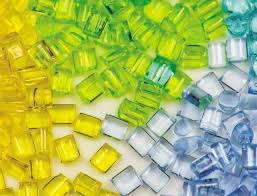
Thermoplastics, on the other hand, can melted and also cured many times. Cellulose derivatives, addition polymers (polyethylene, polypropylene, vinyl acrylics, fluorocarbon resins, and polystyrenes), condensation polymers, nylons, Polyethylene terephthalate, polycarbonates, and polyamides) are also thermoplastics.
Forming Plastic Materials
Plastics are materials that can quickly processed, inexpensive, light and resistant to edging. Although plastic produced from natural resources such as coal and cellulose, the most essential material is petroleum. So, various methods can shape plastic materials. The extrusion method, in which the powdered plastic melted. Then, it compressed with a screw conveyor in a hot or cold chamber, and pulled from a duvet, one of the leading plastic processing techniques. Other plastic materials processing techniques include rolling, heat hardening in hydraulic presses, injection molding, and also casting. Afterwards, finishing processes such as forming different shapes by mechanical means or laser, processing by heating can be applied to plastic products. Therefore, it has replaced metals in many applications.
Brief History of Plastic
The first semi-synthetic plastic was discovered by accident. In 1848, Swedish chemist Christian Friedrich Schoenbein (1799-1868) boiled a mixture of sulfuric and nitric acid in the laboratory. The mixture spills onto the floor, and Schoenbein wipes the floor with his cotton apron, rinses the apron with water. Then, he hangs it on the hot stove to dry. After that, the apron dries, it suddenly burns with flames and turns into ashes. Thus, he discovered nitrocellulose (guncotton).
The first plastic to be obtained was Parkesin, which English chemist and inventor Alexander Parkes developed in 1862 by softening nitrocellulose with vegetable oils and a little camphor. American printer John Wesley Hyatt discovered the plasticizing effect of camphor and thus, patented celluloid in 1869. Moreover, in 1909, US chemist Leo Hendrik Baekeland prepared Bakelite, an all-artificial plastic material, from phenol and formaldehyde. Later, due to the developments in molecular physics and macromolecules, many other plastic types such as nylon, polyethylene, polyvinyl chloride (PVC), polyurethane developed.
Industrial Codes
- ABR Acrylonitrile-butadiene rubber
- ABS Acrylonitrile-butadiene styrene rubber
- ACM Acrylester-2-chlorovinyl rubber/Ether rubber
- ANM Acrylester acrylonitrile
- APP Atactic polypropylene
- AU Polyester urethane rubber
- BIIR Bromo-isobutene-isoprene rubber
- BR Butadiene rubber
- CA Cellulose acetate
- CAP Cellulose acetate propionate
- CF Cresol-formaldehyde
- CIIR Chloro-isobutene-isoprene rubber
- CMC Carboxymethylcellulose
- CN Cellulose nitrate
- CO Polyepichlorohydrin
- CP Cellulose propionate
- CPE Chlorinated polyethylene
- CPET Crystal PET
- CPVC Chlorinated polyvinylchloride
- CR Chloroprene rubber
- CS Casein
- CSM Chlorosulfonated polyethylene
- DBP Di-butyl phthalate
- DCP Di-capryl phthalate
- DIDA Di-isodecyl adipate
- DIDP Di-isodecyl phthalate
- DIOA Di-isooctyl adipate
- DIOP Di-isooctyl phthalate
- DNODP Di-n-octyl, n-decyl phthalate
- DNP Di-nonyl phthalate
- DOA Di-octyl adipate
- DOP Di-octyl phthalate
- DOS Di-octyl persistence
- DOSE Di-octyl azelate
- DPCP Diphenyl cresyl phosphate
- DPOP Diphenyl octyl phosphate
- EAM Ethylene-vinyl acetate rubber
- EC Ethylcellulose
- ECO Epichlorohydrin ethylene oxide copolymer
- EP Epoxy
- EPDM Ethylene-propylene-diene rubber
- EPM Ethylene-propylene rubber
- EU Polyether urethane rubber
- EVA Ethylene-vinyl acetate copolymer
- EVOH Ethylene vinyl alcohol
- FEP Fluoro ethylene-propylene copolymer
- FFKM Fluorinated rubber
- FKM Fluorinated rubber
- FR Polyisopropene rubber
- HDPE High-density polyethylene
- IIR Isobutene-isoprene rubber
- IR Isoprene rubber (synthetic)
